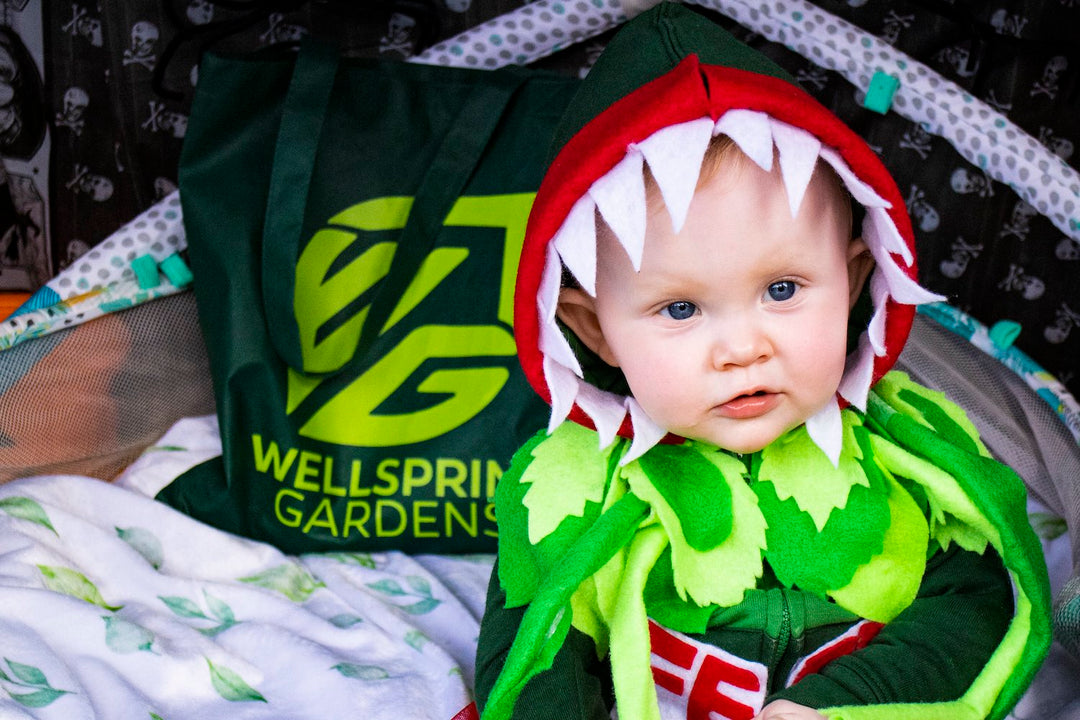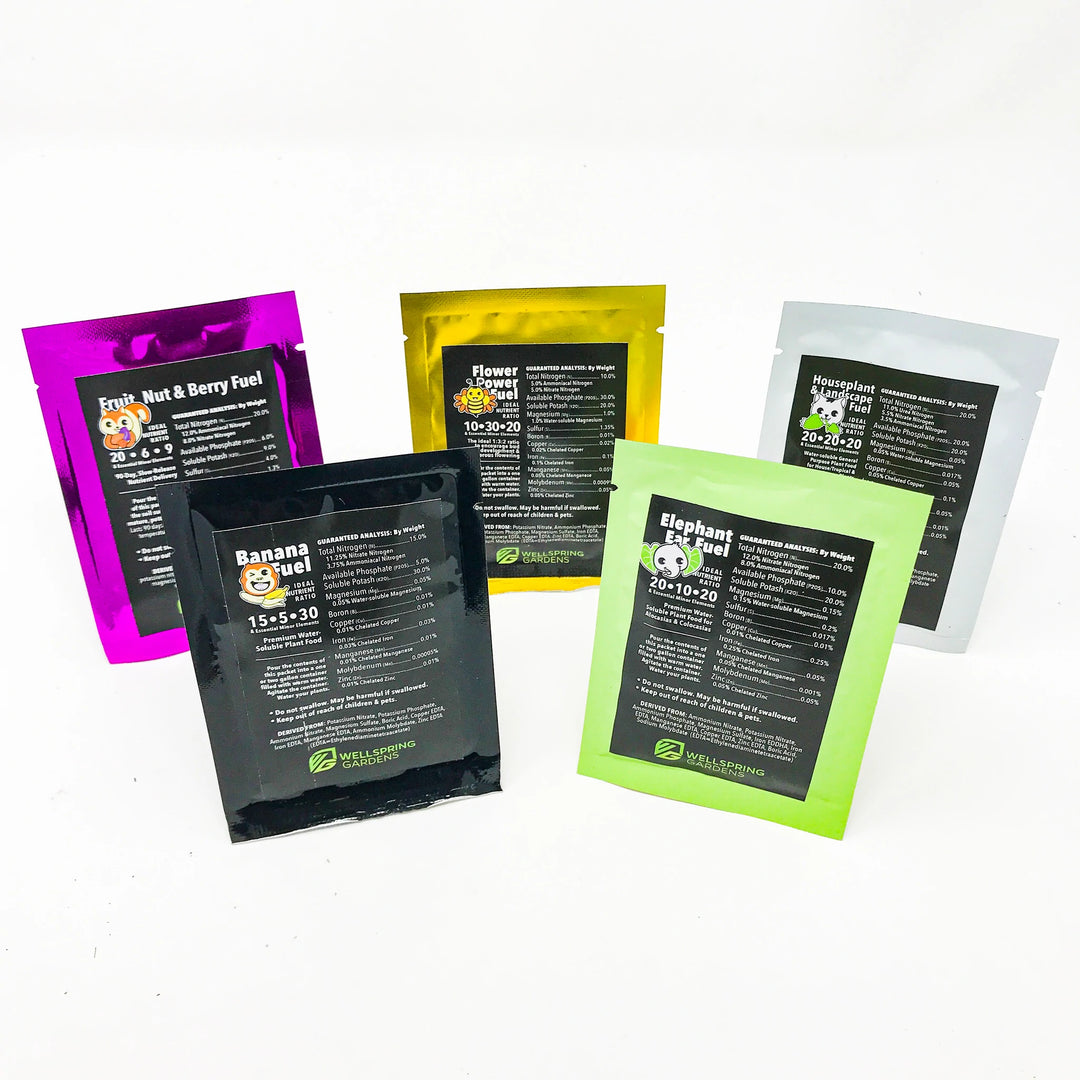Fig Care
- Climate: Hot, dry, low humidity
- Fertilizer: 5-10-10 once a week
- Light: part sun to full sun
- Soil: well-drained soil. Figs will not tolerate excessively wet soil, but they need ample moisture during fruiting.
- Zones: 8-10
Common questions about figs
- Combatting fig rust: Figs do best in a mediterranean climate marked by hot, dry summers and low humidity. In humid or rainy areas, figs are subject to fig rust. While rarely fatal to the tree, and only indirectly affecting the fruit, the appearance of fig rust isn't desirable. Help avoid this problem by keeping the areas under the tree free of leaf debris. Copper fungicide sprays (like Bonide and Serenade for organic gardening) can help during the rainy season, too.
- When to harvest: The fruit stem should be hanging/drooping from the branch and the fruit should be soft. Still not sure? If you pick an unripe fig, it will snap off and ooze white liquid.
- The leaf looks wrong. Did I really get a fig? Immature fig leaves differ from mature ones, so your fig may not have lobes yet. Just give it time and the leaves will evolve into that classic fig look. The picture below shows two leaves from the same fig tree--one that's immature (right) and one that is mature (left).

Need help picking? Here are some traits of each of our varieties:
- Beer's Black: Medium fruit, dwarf
- Black Mission: Large fruit, large yield
- Brown Turkey: Medium fruit, cold hardy, semi-dwarf
- Celeste: Small fruit, ideal for hot, humid areas
- Chicago Hardy: Medium fruit, produces early, vigorous growth
- Desert King (San padro fig): Large first crop, cold hardy
- GE Neri: Extra large fruit
- Ischia: Small fruit, adapted to the west coast
- Kadota: Medium fruit, perfect for canning and making preserves, great in the south west.
- Lattarula (Italian Honey fig): Medium fruit, perfect for cool and warm climates, compact
- Letizia: Medium fruit: Medium fruit, perfect for zone 6
- Little Ruby: Small fruit, perfect for your patio, hardy
- LSU Purple: Medium fruit, large yield, mild and sweet
- Magnolia (Brunswick): Large fruit, hardy, perfect for canning and making preserves, pick before they ripen.
- Olympian: Extra large fruit, great first crop,
- Texas Everbearing: Medium fruit, perfect for growing in the south west and south east
- Violette de Bordeaux: Medium fruit, dwarf, pefect for container growing
- White Marseilles: Large fruit, perfect for growing in the south. Fun fact, the White Marseilles was Thomas Jefferson's favorite fig.
- Yellow Long Neck: Large and bright yellow fruit, very sweet
Texas Everbearing Fig Versus Brown Turkey Fig
Texas Everbearing Fig and Brown Turkey Fig have similar cold tolerance, and they prodcue a similar fruit. A few minor differences are the Texas Everbearing's three-lobed leaves as opposed to the Brown Turkey's five-lobed leaves. Of course, this can be vary at different stages of growth. The Texas Everbearing is more upright than the Brown Turkey.
There are two major differences. First, the Texas Everbearing has an extended season and grows much longer than the Brown Turkey. The other major difference is in the eye or the point where the fruit skin comes together at the apex. The "closed eye" of a fruit can prevent water, fungi, etc. from entering the fruit and souring it. Brown Turkeys can have an eye that is open to semi-closed. Texas Everbearing has a closed eye. This is especially beneficial in areas with higher humidity and rainfall.
Shop for Figs at Wellspring Gardens.








